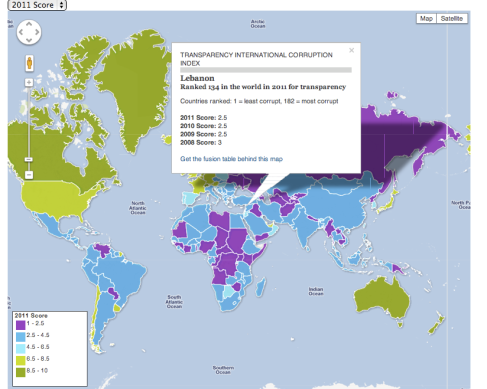
A dispute between Lebanon and Israel over their respective claims to a maritime territory of 5 kilometers of the Eastern Mediterranean that potentially holds billions of dollars of undrilled gas reserves presents an intriguing paradox. In what ways the roles of sovereignty, international politics, and the United Nations are manifesting themselves in the framework of this conflict?
International laws like United Nations Convention on the Law of the Sea (UNCLOS) and treaties have been tools for each country to claim the ownership of the disputed “common area”. While international law is based on a set of universal principles, it can be subjected to a variety of interpretations via foreign relations of a particular government or party especially in the case of Lebanese-Israeli maritime dispute as regional and international interests have much impact in the region. How is the United Nations as a mediator approaching this issue amid various factions’ interventions in the matter?
Appealing to the International Court of Justice might be a good choice to resolve the conflict; yet, drawing on other countries’ experiences with similar disputes might reveal that agreeing on not-agreeing might be a temporary solution in the present times.
Vague laws including UNCLOS corresponding to demarcation of maritime borders
According to the United Nations Convention on the Law of the Sea (UNCLOS), a state is given the rights of exploring and exploiting up to 200 nautical miles (around 370 kilometers) from its shore. In case there is common Exclusive Economic Zone (EEZ) or when two neighboring states are along the same coast, delimitation negotiation among states through treaties is required.
States must deposit charts and lists of geographical coordinates of the EEZ to the UN Secretary-General according to UNCLOS article 75, paragraph 2.
Lebanon signed and ratified UNCLOS in January 1995, but Israel is not a party to UNCLOS.
In this case, should the UNCLOS be binding on both states if one state is signatory of UNCLOS?
According to Wählisch, an international lawyer, in general UNCLOS rules are considered binding on both states as customary international law even if in a certain maritime dispute one state is signatory of UNCLOS and the other state is not.
If the law is binding on both states, this means that Israel is violating international law (which is not a big surprise, really).
On the other hand, international law is not the only and ultimate decisive tool in demarcating maritime borders. In “Borders and Border Politics in a Globalizing World”, Ganster & Lorey (2005) mention that no given method is required by international law to delimit maritime boundaries rather,
“It requires that they be delimited in accordance with equitable principles, taking into account all of the relevant circumstances of the case so as to produce an equitable result. The equitable principles are indeterminate and the relevant circumstances are theoretically unlimited.”
The resolution of maritime boundary is ultimately a political process and UNCLOS seems a peripheral ado to the issue rather than a basis on which states should use to demarcate their boundaries
The only likely avenue for settling this outstanding jurisdictional dispute is through negotiation of treaties and the establishment of an effective mediator capable of finding a way to facilitate dialogue among the involved states.
So, if UNCLOS, the jurisdictional hand of U.N., proved to be ineffective in maintaining a vital role in this dispute, what about U.N.’s role as a mediator in this issue?

source:moqawama.org
U.N. as a mediator in the mid of ghost wars
The Lebanese government since the beginning of 2011 asked the U.N. to protect its maritime boundaries and wealth. For instance, the former Lebanese Foreign Minister Ali Shami sent a letter to U.N. Secretary-General Ban Ki-moon asking him to stop Israel from exploiting Lebanon’s maritime wealth. However, the first requests were refused by the U.N. based on its argument that UNIFIL resolution 1701 doesn’t state that U.N.’s role is to delineate maritime borders as stated by U.N.’s Spokesman Martin Nesirky.
In July 2011, there was a change in U.N.’s stance regarding the issue of offering help in demarcating borders between Lebanon and Israel. During a tripartite meeting between Lebanon, Israel, and the U.N., UNIFIL commander in Lebanon Major General Alberto Asarta said that UNIFIL has the means and funding to accomplish the delineation, but it needs an agreement between Lebanon and Israel. This unfortunately is very difficult to accomplish… What is U.N. asking from Lebanon and Israel is actually convoluted and requires time.
In 2007, a bilateral agreement was signed between Lebanon and Cyprus in which the edges of the zones were marked by six coordinates maintained to be equidistant between the two countries. But this was considered a suicidal mistake for Lebanon. After using Point 1 as a terminal reference (Point 1 is far too north) serving as the point of intersection between the three states, Israel took advantage of this and signed an agreement with Cyprus in just two months after Lebanon submitted its southern maritime boundary proposal to the U.N.
Lebanon reestablished that Point 23 is the real terminal reference in determining the maritime borders. By then, Israel refused the new change claiming that this modification infringes the signed agreement with Cyprus; or more accurately, it doesn’t serve its own interests.
The controversy culminated in Israel’s July 2011 unilateral proposal of its northern maritime boundaries with Lebanon and Cyprus based on the 2010 Israel-Cyprus Maritime Agreement to the United Nations. The Lebanese government protested to the U.N. complaining that the zone defined in the Israel-Cyprus 2010 Agreement infringes on parts of Lebanon’s EEZ.
What we can understand from both countries’ treaties with Cyprus on defining their maritime boundaries is that things are becoming more complicated and that the issue is still stuck regardless of the attempts to reach a certain compromise. Under international law, Israel’s and Lebanon’s maritime boundary submissions to the UN are only unilateral proposals; that’s why chances for a near-future solution to the issue remain minimal.
International Court of Justice: U.N.’s last judicial solution?
According to Article 63 paragraph 2 of the statute of the International Court of Justice,
“Every state so notified has the right to intervene in the proceedings; but if it uses this right, the construction given by the judgment will be equally binding upon it”.
So far, neither Lebanon nor Israel referred their case to the ICJ. The principle of the binding decision might be a hindrance towards particularly Israel’s reach for the ICJ since from Lebanon’s perspective it is infringing on Lebanese maritime boundaries. Israel exceeded by signing contracts with companies like Noble Energy and its partners for drilling and gas extraction and is expecting production as of 2013 while Lebanon is still procrastinating the gas drilling and drowning into its own internal affairs…
Israel might not be reaching for the ICJ while Lebanon, which would benefit from appealing to ICJ, is busy as its sectarian politicians are fighting against each other to harvest the greatest amount of gas wealth into their own pockets…
ICJ isn’t the only judicial body the countries could appeal to; International Tribunal for the Law of the Sea (ITLOS) could determine the maritime boundary. Since only Lebanon is a member to UNCLOS and the ITLOS was established as an international judicial body pursuant to Annex VI of the UNCLOS, any decision pertaining to the case between Israel and Lebanon, Israel would have to expressly agree to the jurisdiction of the ITLOS.
Adding to this, Israel seems to have few chances of winning over Lebanon claims of Israel’s breach of Lebanon’s maritime borders since Israel has not signed on UNCLOS. Its claims to international law, regarding both the potential offshore resources opposite the Gaza coast and with regard to the North adjacent to Lebanon, are problematic.
In light of the regime change in Egypt and the approach of Morssi, Muslim Brotherhood candidate, to win the presidency in the historic current Egyptian elections, Israel will face new challenges to the agreements over the Egyptian transfer of natural gas to Israel. For this reason, it is integral for Israel to have an alternative source of gas. That is why Israel (for its own sake), although it has already started drilling, should seek a fair agreement with Lebanon concerning the delineation of maritime boundaries and comply with the international law.

Source: gulfnews
The role of the United Nations is still ambiguous although UNIFIL said it was working with Lebanon and Israel to try to establish a maritime security zone close to the Blue Line in order to prevent any future exacerbation of the conflict.
Until the matter of its role is clarified, the United Nations may prove to be a persistent predicament rather than a positive model for resolving such conflicts. UNIFIL is not a solution, but a transient conflict management tool that serves as a means to an end. There remains a generalized lack of political will, particularly to pressure Israel towards reaching a final statement to the conflict.
The legal framework for maritime boundary conflicts is relatively clear, although the practical difficulties are complex especially if the conflict is crafted by regional and international interests. The outcome of the uprising in Syria, the developments in Egypt, and the dispute about Gaza’s offshore gas will likely affect the maritime conflict between Israel and Lebanon.
The vicious circle of legal and judicial tools of the United Nations will, voluntarily or not, give time for Israel to siphon out the gas resources and lead the way to a very prosperous near future for Israel while leaving Lebanon lagging behind.









